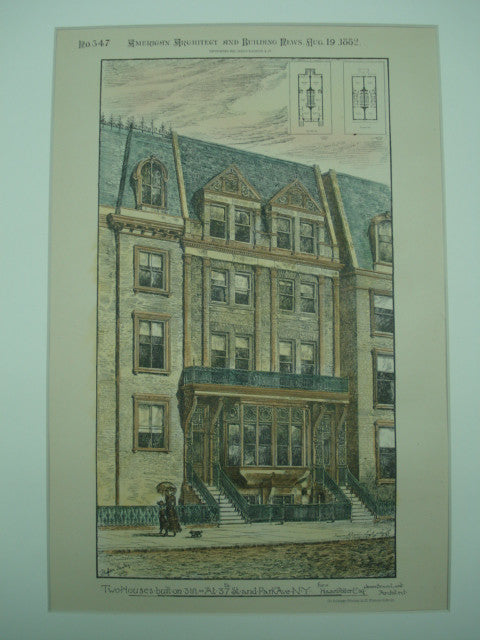News
Electricity Begins and Poetry Ends in 1882 August 17 2015
This is the seventh installment in our series of posts comparing significant events from a year in United States history with a few of our unique architectural plans from the same period. 1882, the topic of this installment, subsequently marks the seventh year of the American Architect and Building News' existence.
Click on the pictures to find the plans below in our store!
Thomas Edison continued to shape the nation's history in 1882. To add to his list of ever-growing achievements, he established the world's first commercial electric power plant, giving electricity to an entire square mile of lower Manhattan. These two houses, at 37th Street and Park Avenue for Howard Potter, might have not been in that original lighted area, but were sure to soon feel the full effects of Edison's genius. They were designed by the master of the Beaux-Arts style, James Brown Lord.
On March 24, 1882, Henry Wadsworth Longfellow succumbed to peritonitis in his Cambridge, Massachusetts home in the company of his close family. The celebrated poet and Harvard professor was best known for his works The Song of Hiawatha and Evangeline, though he was also the first American to produce a translation of The Divine Comedy by Dante Alighieri. The First Baptist Church of Cambridge, Massachusetts (whose interior is shown below) would have been quite near Longfellow's home, though Longfellow did not attend himself. It was designed by Hartwell & Richardson.


